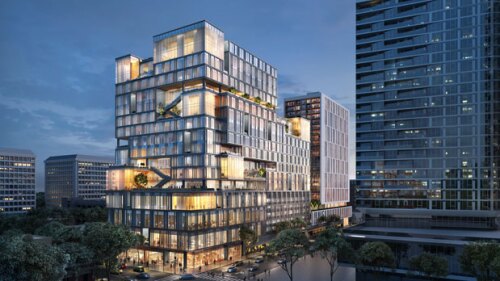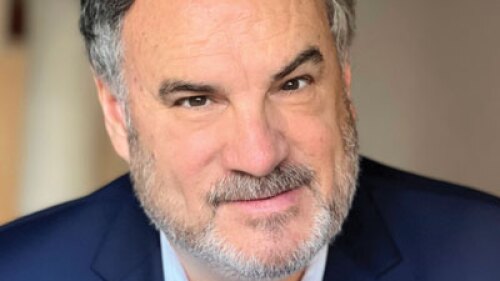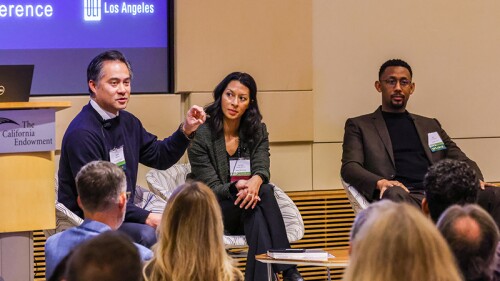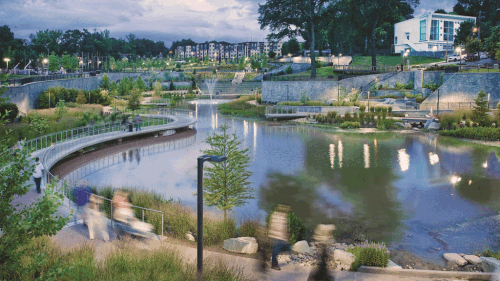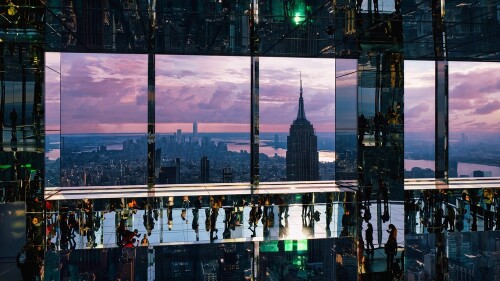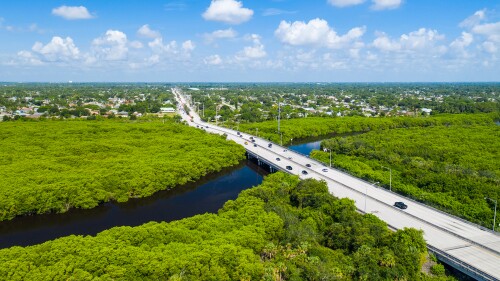Topics
Capital Markets and Finance
Out of the wreckage of the COVID-19 pandemic, Qualified Opportunity Zone (OZ) funds accelerated last year, with nearly $7 billion in new capital raised during the second half of 2021. Much of that money appears to be directed into new multifamily housing projects erected in high-growth markets
ULI MEMBER–ONLY CONTENT: With a growing risk of recession in the next 18 months, U.S. commercial real estate faces uncertainty but remains attractive to investors seeking yield and stability, two experts said during a recent ULI webinar.
Despite growing numbers of African Americans in its ranks, commercial real estate remains largely white and male. Today, African American business leaders point to remaining challenges, including access to capital. But they also underline the importance of the industry in broader conversations.
Design & Planning
How transit-rich destinations create more choice, freedom, and convenience in the post-pandemic city.
Ten health care buildings draw on the healing powers of nature.
ULI members and community leaders are creating parks across North America that support health, social equity, climate resilience, and real estate success. Read profiles of selected ULI Americas Awards for Excellence winners and finalists.
Development and Construction
Developers with Black, indigenous, or people of color in leadership positions see opportunities that some traditional investors miss, said Josh Childress, CEO of Landspire Investments, at the ULI Los Angeles 2023 Urban Marketplace conference.
At the 2023 ULI Los Angeles Urban Marketplace, entertainer Tiffany Haddish spoke with California’s State Treasurer Fiona Ma about access to capital and resources for diverse developers.
Last year, Massachusetts passed the Multi-Family Zoning Requirement for MBTA Communities (also known as Section 3A). When fully implemented, the law will affect the 175 municipalities—half of the total in the commonwealth—that are served by the state’s mass transit system. Section 3A mandates that there must be at least one zoning district where multi-family housing is allowed “as of right.”
Resilience and Sustainability
City is actively working to make its neighborhoods safer and more resilient to extreme rain events
When cities decline, they can take decades to recover, if they ever do. McKinsey’s research suggests that many U.S. cities could experience a steady downward trajectory without effective intervention. We find that some cities may take years to bounce back from the impact of the COVID-19 pandemic on real estate and the economy. But such a doom loop is far from inevitable; there are many examples of success that we can learn from. Indeed, while U.S. cities will differ from what they were before COVID-19, this is also an opportunity to shape them into more vibrant and equitable places.
Federal funding opportunities through the Bipartisan Infrastructure Law (BIL) and Inflation Reduction Act (IRA) are supporting essential investments in green and resilient infrastructure, with the potential to create more livable communities while also supporting successful real estate developments through enhanced aesthetics, improved building user experiences, and operational efficiencies.
Issues and Trends
Third edition evaluates top 30 global powerhouses report reveals world’s leading urban hubs rise in popularity post pandemic. Challenges include new economic conditions, rising costs, adaptation to hybrid work, innovation gaps, the climate imperative, and transition to social, mixed-use districts.
Guy Kawasaki—chief evangelist at Canva, former chief evangelist for Apple, and bestselling author—summed up insights gleaned from his years in tech and as host of the Remarkable People podcast, interviewing such luminaries as Margaret Atwood, Tony Fauci, Jane Goodall, and Steve Wozniak.
As congregations across North America grapple with shrinking membership and aging facilities, a new opportunity is emerging: transforming faith-owned land into affordable housing and community-serving spaces. At the 2025 ULI Fall Meeting in San Francisco, panelists in the session “Spiritual Brownfields: Declining Congregations and Opportunities for Housing on Faith-Owned Land” explored how churches and developers are partnering to bring mission-driven housing to underused sacred sites.

